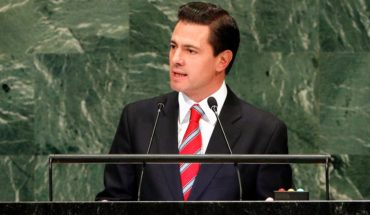The news turned on all the alarms at the beginning of this s Emanates. The planet can lose between 500,000 and one million species of plants and animals over the next few years, according to the global evaluation of IPBES, an independent scientific platform that studies the state of biodiversity worldwide. “We make evaluations that seek to give strong messages to give alternatives to decision makers,” says Ana Maria Hernández, president of this Organization.
“More than half of the Caribbean’s endemic species and 40% of those in Mesoamerica are at risk,” laments the head of institutional relations of the Humboldt Institute of Colombia, aiming at marine species and mammals.
The danger also reaches the habitats. “In Colombia, all endemic species associated with the Moors are at risk,” he adds. He also laments the loss of the diversity of potatoes and maize in the region because “every time we do more hybridization with edible plants we weaken their genetic expression,” he criticizes.
Another highlight is the loss of global forest coverage that fell from 4.28 billion hectares to 3,990 between 1990 and 2015. In the case of Latin America and the Caribbean, these data include those compiled in an assessment of the entire American continent that was announced last year. “According to the evaluation of the Americas of IPBES, compared to the situation before the European settlements, 72% and 66% of tropical dry forests in Mesoamerica and the Caribbean, respectively, 88% of the tropical forests of the Atlantic and 17% Of the Amazonian rainforest of South America have been transformed into man-dominated landscapes, “he explains.
Likewise, 40% of the population does not have access to clean and potable water. “Some important cities in South America face severe episodes of water shortages during some periods of the year,” he says, pointing to Bogotá, Quito, La Paz, and Lima. On the other hand, about 75% of the main stocks of fish are currently depleted or exploited. “Native fish species in the Caribbean continue to decline due to interventions such as dam construction, pollution and overexploitation,” he laments.
Precisely, the last two factors are among the five direct causes of the loss of global biodiversity, the report says. They must be added to the change in land and sea uses, climate change and invasive alien species.
A hundred experts collected data on the state of biodiversity in the region that have been included in the global assessment.
Future challenges
The report presents several scenarios, but it will all depend on “if we keep doing things as we are doing or if we change the patterns.” This is why decision makers are important, because even if the data is devastating, there is still room for hope.
“We are seeing that the work is serving humanity,” congratulates Hernandez, recalling that although “we make recommendations for politicians, we are not prescriptive.” However, for the president of IPBES there is a “global challenge”. Transformative approaches must be adopted, in which the private sector must also be involved. Without them, the challenges will be difficult to achieve, he adds.
As the decisions and changes arrive, the agency is already working on the new program that goes up to 2030 “with evaluations that are reviewing the problems identified in the global assessment.” These include a technical document on climate change and biodiversity and one that links biodiversity and compliance with sustainable development Goals (ODS), especially those associated with food, water, health and climate change .
“At this point, we classify the landscape of invasive species,” he says. “We are still identifying them, some are voracious,” he adds. Latin America is home to more than a hundred invasive alien species, including the lionfish.
In addition to investigating its behavior, the scientific platform is studying the sustainable use of biodiversity of wild species and is conducting a methodological assessment on how to understand biodiversity for society, in issues Linked to the economy.
The vaquita is endangered and caught in a furtive manner.
Latin America Present
This is the first time anyone from Latin America is leading the platform. It’s also the first time a woman does it. “That is very significant in a world like science, where men have been more at the forefront, but in the last decade there has begun to be gender equity,” he considers.
The Latin American scientific community is participating in these investigations, as in addition to having two co-chairs, Sandra Díaz from Argentina and Eduardo Briose from Brazil, there are also experts from Mexico, Argentina, Venezuela and Colombia. Also, “This evaluation was opened to recommendations twice by the public and we received very useful comments from Mexico and Colombia,” says Hernández.





